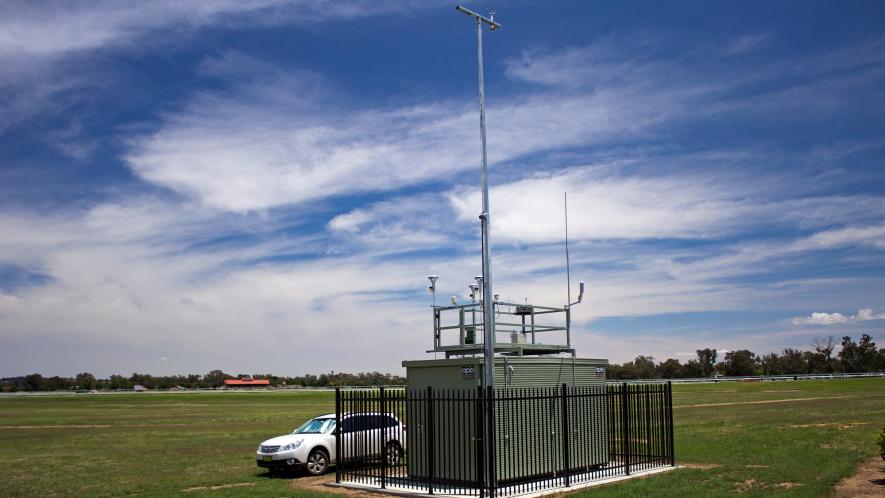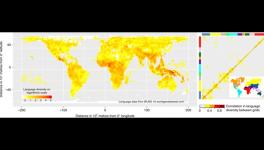DNA: How Airborne Environmental DNA Helps in Monitoring Biodiversity

Monitoring biodiversity continually is nearly impossible due to several factors, the most pertinent being the lack of infrastructure to measure. | Image: An air quality monitoring site in New South Wales. (Representational image. Image courtesy: Wikimedia Commons)
Can air pollution monitoring stations help keep track of an ecosystem's biodiversity? This may sound a little absurd, as how come the air pollution monitoring system capturing the pollutants says anything about biodiversity? But this can happen, and scientists reported successfully tracking several types of organisms in an area with the help of air pollution tracking devices. The agent that establishes the link between the devices and the flora and fauna is the eDNA or environmental DNA.
Recently, scientists have published their findings in a paper published in Current Biology. There, the researchers reported having captured airborne eDNA in the air quality monitoring stations along with the pollutants and Particulate Matter (PM). They reported identifying more than 180 eDNA belonging to different species like vertebrates, arthropods, plants and fungi floating in the air. The air pollution monitoring devices capture the airborne eDNA and the particulate matter or other pollutants, and scientists can separate them and identify which species they represent. The researchers claim that the air monitoring networks are gathering airborne eDNAs of local biodiversity worldwide, as these networks are present in almost every part of the world.
Monitoring biodiversity at local levels is an essential issue as global biodiversity is plummeting rapidly. According to WWF data of the ‘Living Planet Report’, a staggering 69% decline in biodiversity has occurred since 1970. Therefore, there is increasing pressure on nations' governments to assess the rates of species decline to know the present state of biodiversity. However, monitoring biodiversity continually is near to impossible due to several factors, the most pertinent being the global lack of infrastructure to measure. Conventionally, researchers or people engaged in conservation activities monitor a few terrestrial species in a small region. The process involves labour-intensive methods like surveillance through cameras, observation done manually and tracing footprints or faeces etc. Only very general measurements like assessing forest cover are possible on large scales. In these circumstances, the latest findings of monitoring the local biodiversity through the existing air pollution monitoring networks can be instrumental.
The eDNA or the environmental DNA are the small amounts of genetic materials available in the environment. Organisms can generate these genetic materials available in several places like water, soil and air. For example, pollens emanating from plants of various types are a widespread phenomenon. These pollen contain the plant's genetic material; likewise, the fungi can deliver their genetic materials through the spores flying in the air. Airborne eDNA research is a newly emerging field focusing on detecting species from the remnants of their genetic materials in the air. Researchers attempted to conduct a meta-survey of plant communities in a previous study.
In the recent research published in current biology mentioned earlier, Elizabeth Clare of York University, Canada, and her team conducted a pilot study with the help of London and Edinburgh air quality monitoring stations. They trapped airborne eDNA representing local flora and fauna. The air monitoring devices track the presence of pollutants, such as lead, trapped in the device's filters.
The London station is near a deer park, and the researchers collected samples at various intervals. Their time intervals spanned from one hour to one week, and they did it to test if time was vital in collecting the samples.
The team extracted and sequenced the eDNAs from one-quarter of each filter. After this, they compared the sequences with existing databases like GenBank. Surprisingly, the researchers found DNAs from a wide range of organisms. Their analyses showed that the DNA samples represented 34 species of birds, a wide variety of trees and, importantly, some pathogenic fungi.
Experts opine that this can be a new method of monitoring biodiversity with less expense, as air quality monitoring stations exist everywhere. However, before this method can be used widely, there remain some aspects that researchers will have to work out properly, like the optimal timing of sampling, finding how far the eDNAs can travel in the air etc. Joanne Littlefair, a co-author of the study at the Queen Mary University of London, pointed out that the method is unlikely to tell about species abundance in an area but can help monitor other phenomena like bird migration and how it changes with the changing climate.
Get the latest reports & analysis with people's perspective on Protests, movements & deep analytical videos, discussions of the current affairs in your Telegram app. Subscribe to NewsClick's Telegram channel & get Real-Time updates on stories, as they get published on our website.

















